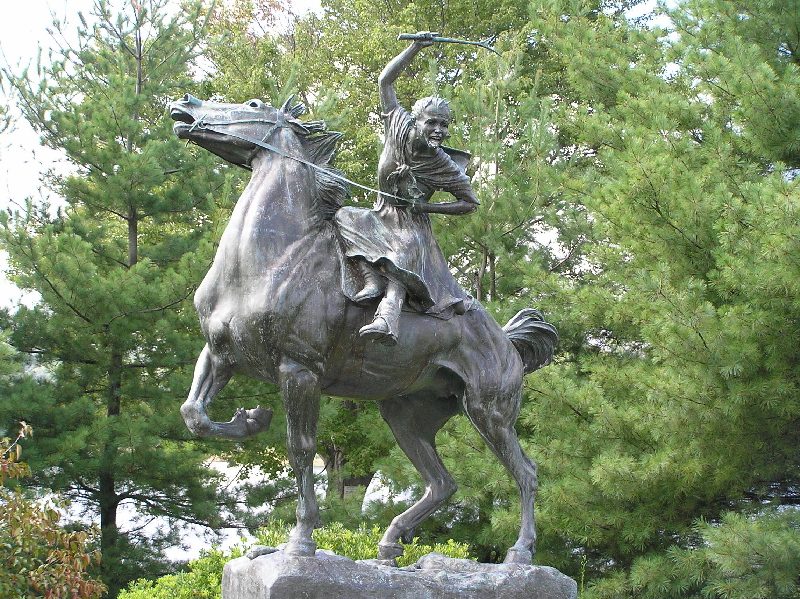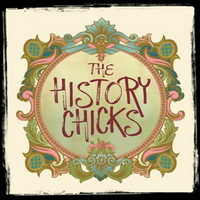by The History Chicks | Jul 14, 2014 | Biography Episode, Episode, Podcasts
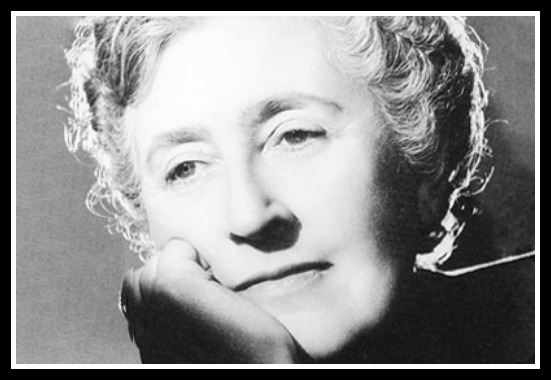
Agatha Christie once said that she wanted to be remembered as, “a good writer of detective and thriller stories.” We say she needs to be remembered for a whole lot more: daughter, wife, mother, pharmacist, playwright and adventurer only begin the list. Agatha Mary Clarissa Miller was born on September 15, 1890 in Torquay, England. She was the third (with a huge age gap) child of Frederick and Clarissa (Clara) Miller. We cover all the details of her family in the podcast, but let’s suffice it to say that her childhood was by all accounts idyllic and her family and home were full of kooky, smart, interesting characters worthy of a book series on their own.
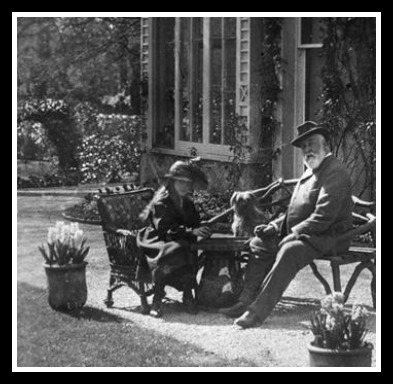
Agatha and her father at Ashfield
She was indulged by her parents, older brother and sister as well as the small staff of their charming upper- middle class home. Agatha didn’t attend formal school until she was a teenager but was educated at home. Bright and imaginative, she broke her mother’s “rule” that children shouldn’t learn to read until 8, but taught herself at 5. Oh yeah… she was a tree-climbing, imagination game playing, rule breaking, dog loving kid who had everyone in her life wrapped around her finger.
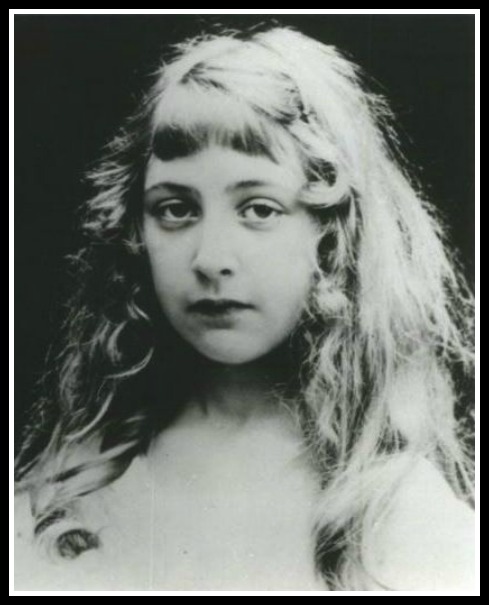
That is, until her father died when she was 11. With her brother and sister grown and living lives of their own, Agatha and her mother set off to redefine their family. Papa wasn’t the greatest money manager and financial troubles worsened after he died. But Clara, through smart choices, was able to keep the beloved family home, as well as provide a finishing school education in Paris and a coming out season in Egypt for Agatha. Agatha toyed with the ideas of “careers” as a professional singer or concert pianist. A bad review of her voice crushed her first dream, and stage fright her second. Once they were back home in Torquay, World War I broke out and it was all hands on deck with the war effort. Agatha, in her early 20s, did her part and worked in the local hospital. First in nursing duties and then in the pharmacy. She learned chemistry and biology and the education that would help her most in life: how poisons and medicines worked in the body. 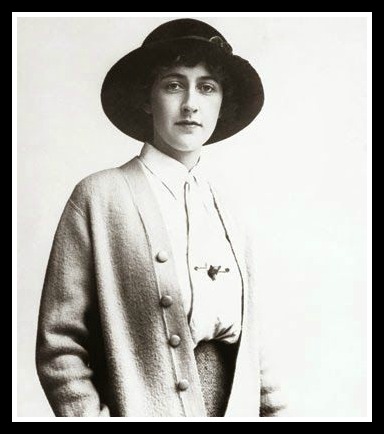 And in her free time what did she do? Write. Her sister challenged her to write a detective story by saying Agatha couldn’t so during the war Agatha completed a novel, The Mysterious Affair At Styles, and sent it off to publishers. She soon met a dashing and charming young aviator, Archie Christie who would- despite concerns and lack of time together- become her husband. Life with Archie distracted her- setting up a home and having a baby will do that- but one day she got word that her novel, starring a detective who was to follow her around for most of her career- Hercule Poirot- was to be published.
And in her free time what did she do? Write. Her sister challenged her to write a detective story by saying Agatha couldn’t so during the war Agatha completed a novel, The Mysterious Affair At Styles, and sent it off to publishers. She soon met a dashing and charming young aviator, Archie Christie who would- despite concerns and lack of time together- become her husband. Life with Archie distracted her- setting up a home and having a baby will do that- but one day she got word that her novel, starring a detective who was to follow her around for most of her career- Hercule Poirot- was to be published.

Agatha’s first novel, published in 1920, four years after it was written. (Remember that, aspiring novelists!)
Agatha was contractually obligated to write five more books, and Archie seemed to like that she was bringing in some money- so she did. Although he wasn’t what we would consider creatively encouraging, the income supported his golf and living-the-good-life habits. Agatha quickly learned the book business, got an agent and renegotiated a new contract with a better publisher. She was gaining success as a writer (although it took quite awhile for her to accept that she really was one).
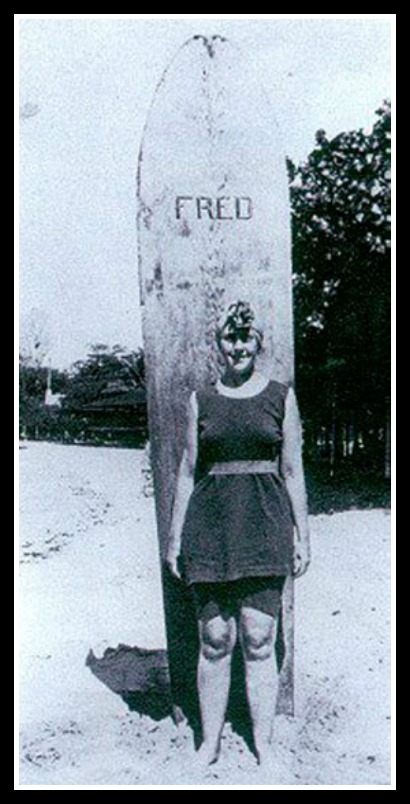
Agatha traveled with Archie for his job and learned to surf!
The family moved into a larger home and named it Styles after her first book. The Christie family seemed to have it all- but Archie was getting a bit more than his fair share: he had fallen in love with another woman. This news, along with Agatha’s mother’s death, sent the couple down a slippery slope and led up to what was possibly the greatest mystery in Agatha’s own life (aside from why Archie was such a jerk)- her eleven day disappearance in 1926.
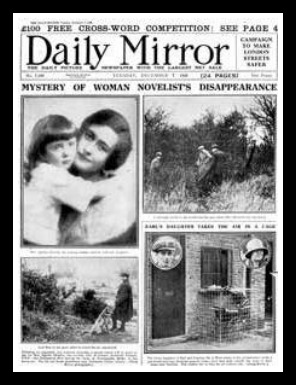
Agatha goes missing one day! Her car is found full of her belongings but she is gone! Her face is splashed all over the press.
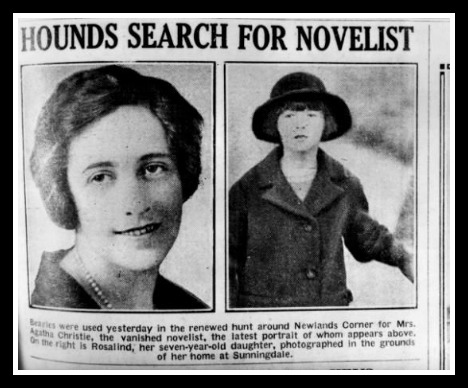
Who best to stage her own disappearance than a mystery writer? Or was it amnesia from a car accident? What of the maaaany clues that were left behind and ignored? Was this all a publicity stunt?
(But some of us know exactly what happened to her, right? Right? Wibbly wobbly, timey wimey…)

Riiiight, wink wink…amnesia. Sure.
In a plot twist worthy of a Christie novel, Agatha’s divorce changed her life for the better. With Rosalind away at school, Agatha booked passage on The Orient Express and got her groove back. A series of introductions and adventures led her into the life of 14 years younger archaeologist, Max Mallowan. A very delightful romance ensued, and they were married within two years.
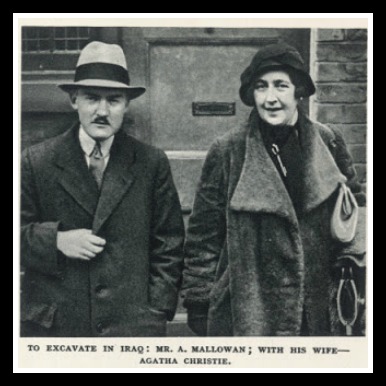
Agatha and Max
The Mallowans would spend months on archaeological digs where she wasn’t The Queen of Crime…more like the Queen of Grime. She helped to clean and log artifacts and wrote when she could. Whatever it was- the love, support, adventure, locations- she began a pace of 2-3 novels a year for the next ten years including psychological romance novels under the pen name Mary Westmacott. World War II slowed her a bit, as Max joined the Air force and Agatha again went to work in a pharmacy. Tax and pay issues began to plague her which were complicated by the war. Her method for solving financial problems was simple: write more books (okay, that may be the oversimplified version, we do go into detail on all of this during the podcast). She was amassing a very large library of her books and eventually Queen Elizabeth took notice and awarded her the order of Dame Commander.
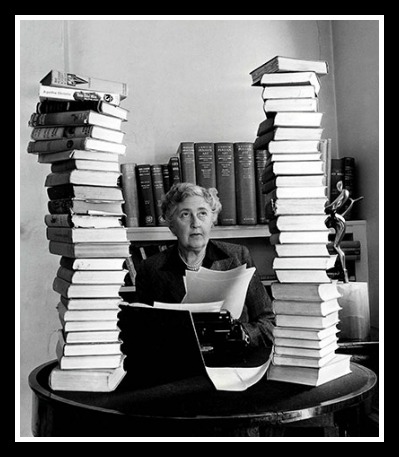
That is a lot of books
Plays, movies, television shows…Agatha’s work was everywhere and she kept up the pace as long as she could.
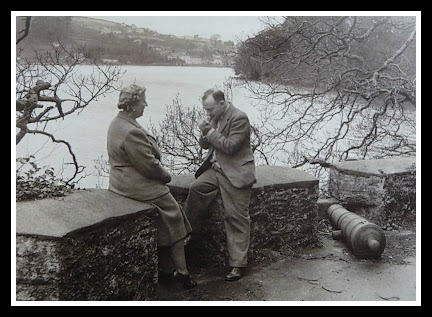
Agatha and Max near their home, Greenway. She had a really great life. (Courtesy National Trust)

Agatha at the Acropolis 1958. She looks so happy. (courtesy National Media Museum)
On January 12, 1976 at the age of 85, Dame Agatha Christie Mallowan died of natural causes at her home. Agatha is buried at St. Mary’s church, Cholsey, UK. 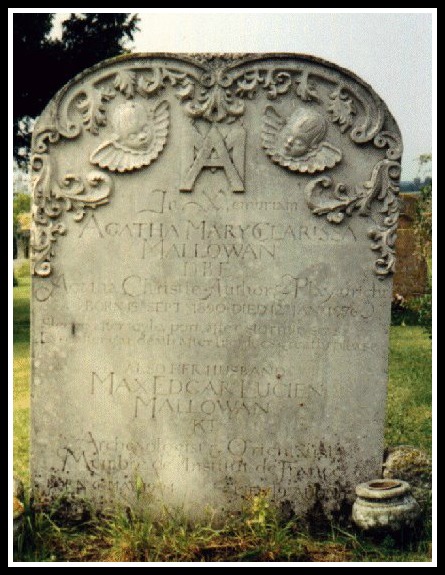
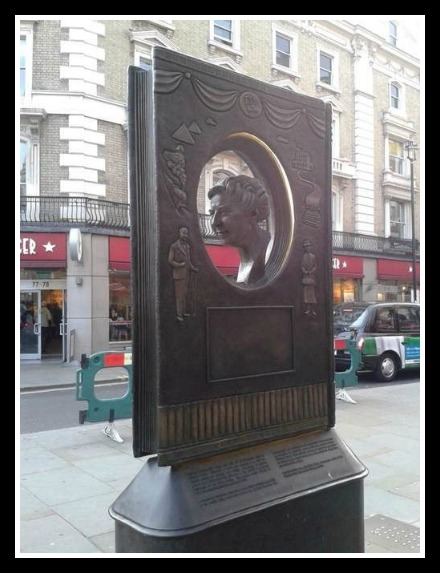
Detail on London Sculpture: left to right, Hercule Poirot, the Orient Express, the pyramids, a mousetrap, a country house, typewriter, and Miss Jane Marple. (Courtesy Guidedwalksinlondon and this link has more to share on Agatha!)
TIME TRAVEL WITH THE HISTORY CHICKS If you want to immerse yourself into the Christie subculture, you must go here first: AgathaChristie.com. Maintained in part by her archive trust, you can read more about her life and work, see a bunch of pics and *sings* there is an active message board! Really a great site for new and established Christie fans. The British Museum has an pretty cool online tour of pieces from Agatha and Max’s archaeological work, spotlighting one of the larger parts of her life when she kept out of the public eye. Agatha Christie and Archaeology . Headed to Torquay, the “English Riviera”? A gallery is devoted to Agatha at the Torquay Museum, including Poirot’s study (donated from a movie set).
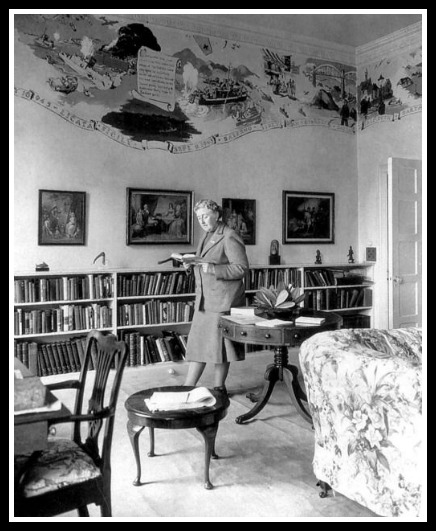
This very room in Greenway seems to be refurbished exactly as she had it. Go, report back and tell us if it is!
Agatha and Max’s stunning home, Greenway, is now open to the public. Go! Take pictures! Better yet, take us! Books! We narrowed our favorites about Agatha down to three books each. Beckett’s choices: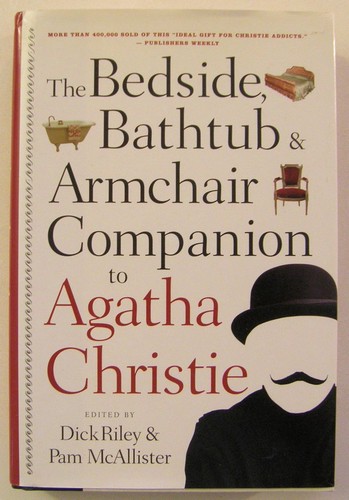
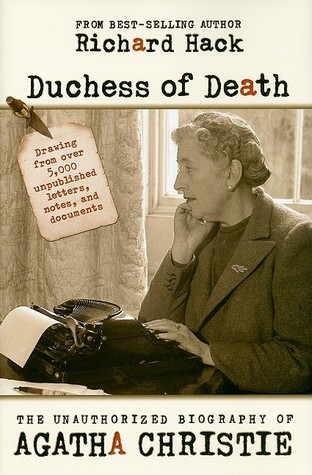
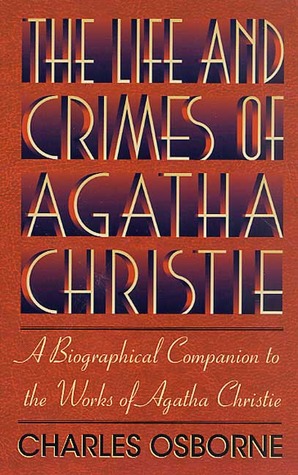 And Susan’s favorites:
And Susan’s favorites: 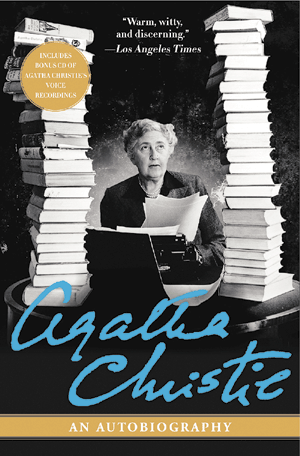
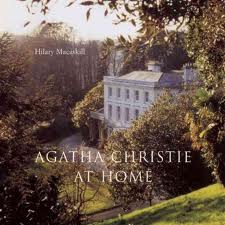
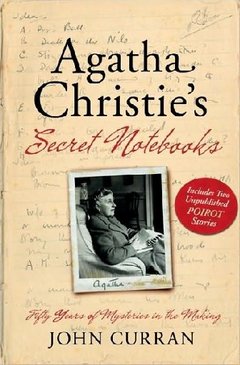 The BBC movie is available on DVD, we got a copy from the library (Freesies!)
The BBC movie is available on DVD, we got a copy from the library (Freesies!) 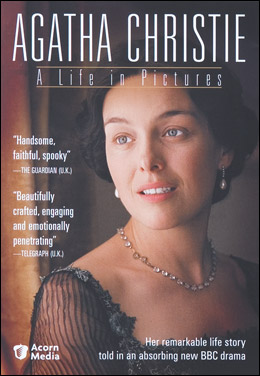
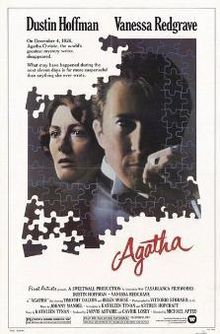
1079 movie explanation of what happened during Agatha’s disappearance. Horrible. Watch old episodes of Murder She Wrote, instead.
Beckett geeked out about the Agatha themed geocaches, join in the hunt at Geocaching.com While we can’t go hunting the ones in the UK and New Zealand -if you can dooo iiit!
As always, music comes courtesy of Music Alley. Visit them at musicalley.com
PODCAST AUDIO: “Agatha Christie”
by The History Chicks | May 24, 2014 | Biography Episode, Episode, Podcasts
Her name is now often a punchline to a joke with the words “nutty” or “crazy” peppered liberally throughout. But in the simplest terms Carry Nation was a woman who boldly worked for reforms which she felt would benefit all mankind. Nothing funny about that.
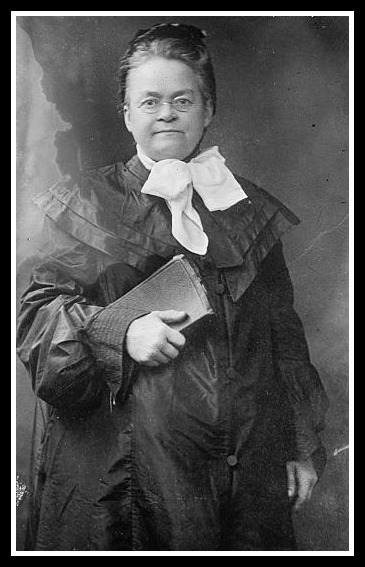
Carry Nation, Activist, Prohibitionist, Hatchet Wielder, Mother
Born Carrie Amelia Moore in Garrard County Kentucky on November 25, 1846. Her father, George, was fairly well- off plantation owner with a very deep Christian faith. Carry (she later changed the spelling of her name…we go into the whys on the podcast, just didn’t want you to think that was a typo) was very devoted to her father. Her mother…not so much. Mother Mary felt that the best way to raise a child was for Carry to spend as much time with the family’s slaves as possible and essentially farmed young Carry out. (She may also have thought she was Queen Victoria – so getting away from Mom may have been very wise).
As the Civil War began George moved the family (born into and purchased) around, first within Kentucky and then to several farms in Missouri, Texas, Kansas and Arkansas. While the family may have started financially secure, they didn’t remain so and Carry was not raised as a demure belle. There were many years where the family made very little money and scrambled to survive.
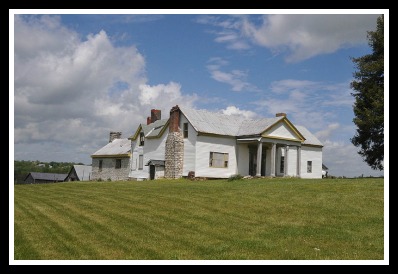
Carry’s birth home in Kentucky-not exactly Tara and the first of many places she would call home.
Carry’s formal education was very limited- she did read at home from the Bible, and attended a Christian girl’s school in Missouri for a short time. While there she developed a mysterious ailment that sent her back home and into bed for five years pretty much ending her elementary education. During her recuperation time she did spend time in religious study and experienced an epiphany that began a life-long conviction which would be the guiding force for her remaining years.
Carry grew…and grew. During the Civil War the average height of a soldier was 5’8″. Carry was 5′ 11 1/2″ of strong woman who desired nothing more than to find a husband who would love her and whom she could love in return ( it sounds like the basis for a romance novel, doesn’t it?) Her family took in boarders including one Dr. Charles Gloyd (ooh, a doctah!). A surreptitious courtship played out and against her parents wishes, two years later Carry and Charles were married.
Although they had lived under the same roof before, once married Carry discovered her husband’s secret: he liked to drink alcohol. A lot. And he was a mess. Within a year she was pregnant, left him and moved back to her parents home.
Six months after that, Charles died.
Carry was now responsible for a baby as well as Charles’ mother who had depended on Charles and Carry had grown fond of. What’s a strong woman with determination and very little funds to do in such a situation? She went back to school.
Bold, right?
Carry received her teaching certificate and supported her family for four years until she lost her teaching job and found herself in a quandary. Unlike her first solution of pulling herself up by her bootstraps, this time she felt that marriage again was the answer to her problems. Enter- after ten days of prayer for a husband- David Nation. He was 19 years her senior, a lawyer, newspaper editor and minister and within a couple of months they are husband and wife. And daughter from each side and a couple sons from his. And former Mother-in-law. It’s really a very modern story.
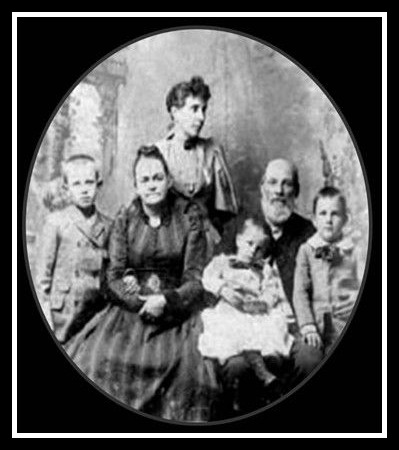
One big blended Nation family
Not exactly a happy modern story, the marriage was unpleasant from the start as David and Carry pooled their resources and began to scrap out a living. First cotton farming, then running a hotel but they struggled financially and suffered quite a few hardships (yes, we go into details in the podcast) and eventually the couple was empty nesters and settled in Medicine Lodge, Kansas. It was here that Carry had her first taste of the battle that would give her a place in history.
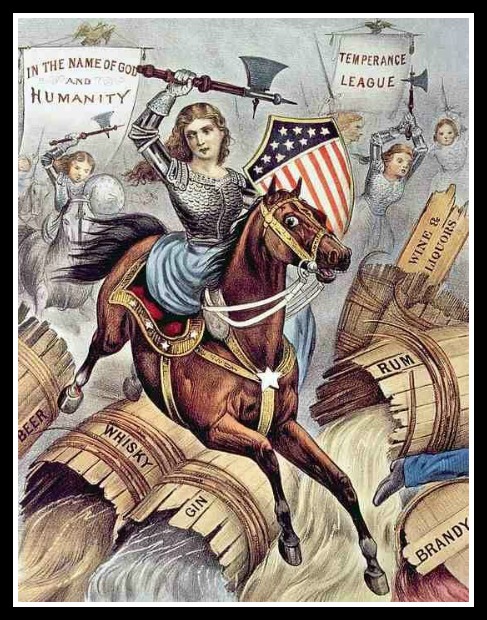
This Currier and Ives print predates Carrie by 25 years…yet check out the weapon of choice.
Throughout her life Carry had made choices based on what she felt was best not just for herself, but for others. She helped those less fortunate as best she could with free beds, food, any kind of assistance she could offer- always using her faith as a guide in her decisions. Because of her giving nature, she encountered many troubled families in need. In Medicine Lodge she became involved with the Women’s Christian Temperance Union and began to believe that the root of many family and societal problems was alcohol. The law in Kansas was on her side with this- at the time it was a dry state, although saloons and “joints”, as she called them, often received a blind eye as they carried on business.
At first, Carry tried to work within the law and work through the proper channels to close down any operating saloons- and was quite unsuccessful. She felt that God lead her to her next action and with the first stone she hurled in a bar in Kiowa, Kansas she launched herself into prohibitionist history.
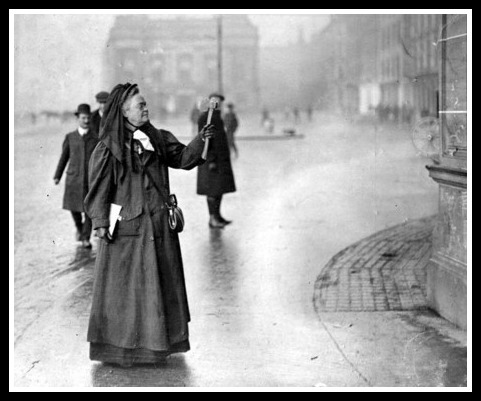
Carry setting about on her life’s work
After a successful run in her own corner of the state, Carry took her activism to Wichita. At that point, she was 54 years old, dressed in black from head to toe- she walked into the then Carey Hotel bar and smashed.
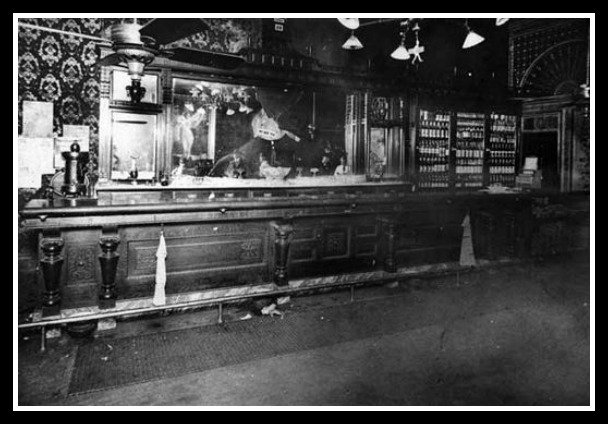
The Carey House Hotel bar after Carry got busy. (Note reflection of poor Cleopatra in broken mirror)
Did she get arrested for her antics? Oh yeah. Did she get followers from the publicity who emotionally, financially and any other ‘ally you can think of supported her? You betcha.
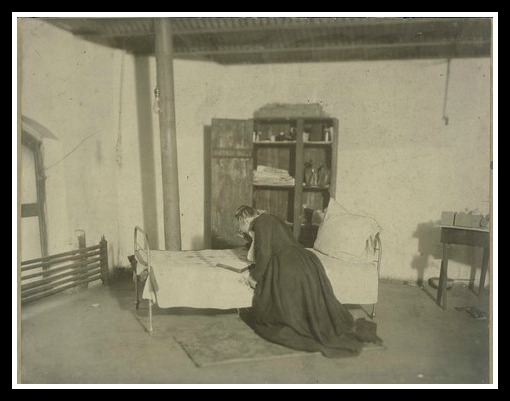
Praying during one of her maaaany days in jail. (Courtesy Kansas Historical Society)
She soon changed her weapon to a small hatchet which was easy to carry and effective for her mission, but also became a marketing tool along with with using her name- Carry A. Nation- to raise funds for her legal defenses.
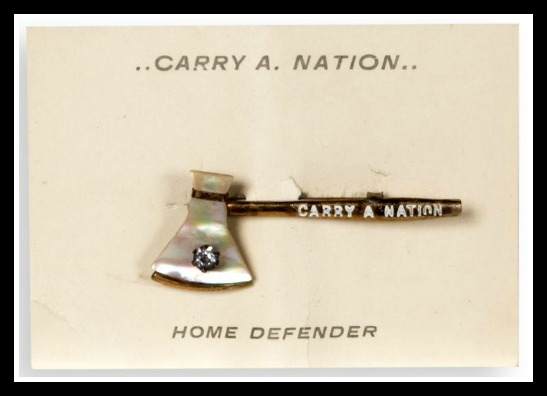
Hatchet pin sold by Carry Nation and her Home Defenders
For years she worked this Smash/Jail pattern which begs to be described as Carry Nation and the Home Defenders: Hatchetnation Tour. She spoke all over the country, joined the Vaudeville circuit and shouted her message from as big a global stage as she could find.
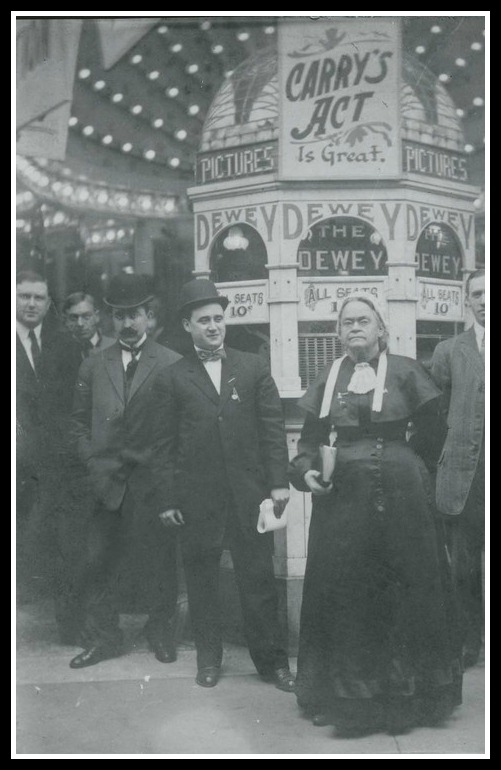
Vaudville days. It’s a great act. (Courtesy Kansas Historical Society)
David eventually divorced her on the grounds of desertion, but Carry didn’t seem to mind. She felt that God had put her in a miserable marriage so that she would be driven to do this, her life’s work. Her motives were pure- she believed that curbing the flow of alcohol was the only way to end crime, bring families back together, to end spousal abuse and abandonment- to help women and children.
Prohibition would prove her theory wrong, but she wouldn’t live to see that.
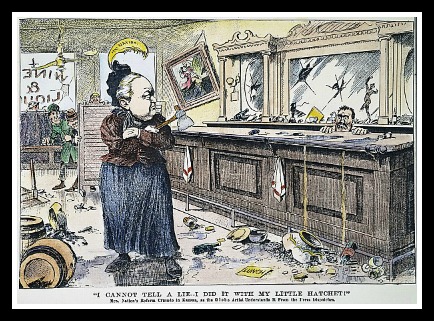
I cannot tell a lie, I did it with my little hatchet
Around 1909 her bloom was beginning to fade. She was turning from motivational powerhouse to object of ridicule so she and her daughter settled down in Host Springs, Arkansas and ran a home for widowed and abused women. In 1911 she collapsed on stage saying, “I have done what I could” and was transferred to a hospital where she died on June 9, 1911 at the age of 64.
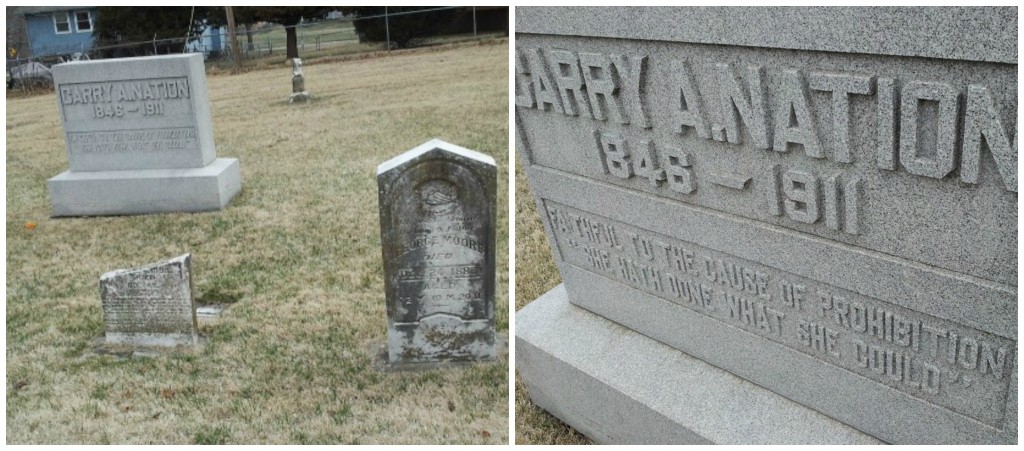
Carry was buried in the family plot in Belton. Missouri. The WCTU erected her headstone using her own words. Susan took these photos- Belton is very close to Kansas City
As part of their efforts throughout the country, the WTCU installed drinking fountains like this one honoring Carry nearby the former Carey Hotel in Wichita.
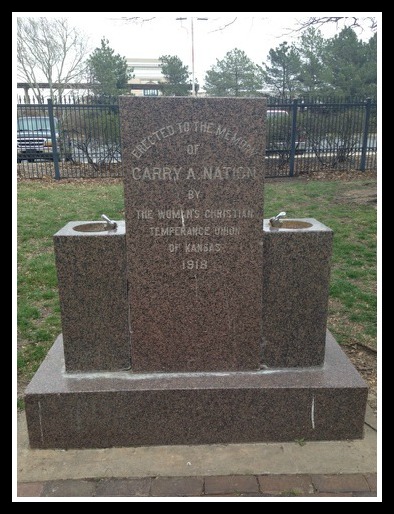
Beckett sent her husband to take this picture while she waited in the car.
TIME TRAVEL WITH THE HISTORY CHICKS
Kansas Historical Society has A LOT of documents, artifacts and pictures about Carrie, link will take you to introductory page, but click around for more. And if you find yourself near Belton, Missouri the Belton Historical Society has odd hours, so call before you visit.
If you are headed to Kentucky, The Carrie Nation house, where she was born, is listed on the National Registry of Historic Places, but isn’t open to the public.But don’t despair, the Oscar Getz Museum of Whiskey History is open to the public and Beckett will tell you that it’s worth the visit.
The Carry Nation House in Medicine Lodge, Kansas is open as a museum. This link is to other things you can do to make Medicine Lodge worth the trip. (Not endorsed by us, it’s really a haul from where we are and have never been, but please! Report back if you go!) 9 Things To Do In Medicine Lodge
The Women’s Christian Temperence Union is still an active organization. Link will bring you to their website, although directly to the page of water fountains that we had discussed in the podcast.
Opera fan? Oh, yes there is. SMASHED: The Opera
BOOKS!
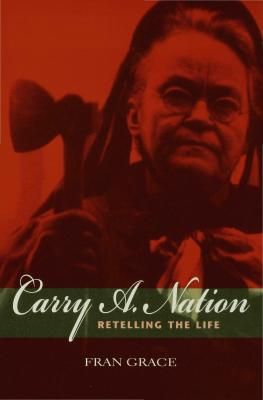
Carry A. Nation by Fran Grace

Cyclone Carry by Carleton Beals
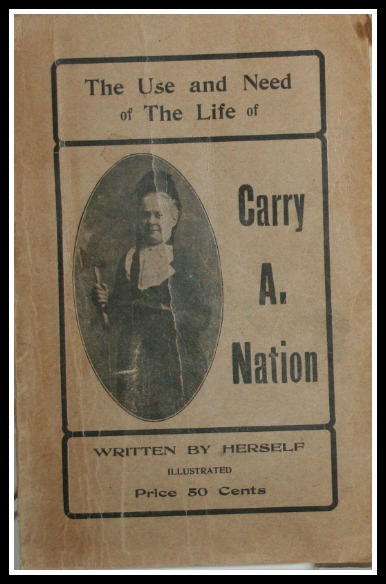
Carry’s Autobiography, The Use and Need of the Life of Carry Nation
This is available online…try Project Gutenberg
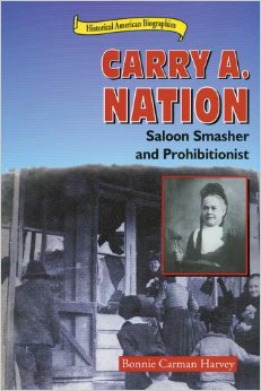
For the under 12 set (or those who like a very quick read) by Bonnie Carman Harvey
Profiles of Carry in both these very interesting and lofty tomes:
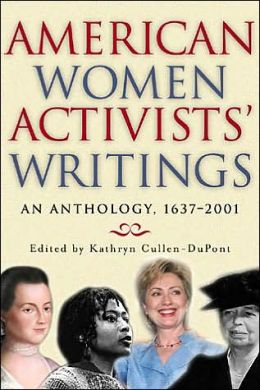
American Women’s Activists’ Writings edited by Kathryn Cullen Dupont
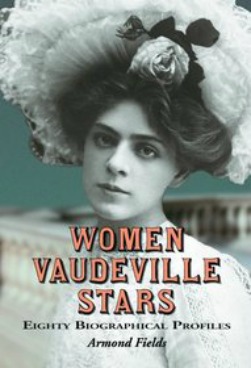
Women Vaudville Stars by Armond Fields
Fascinated by Prohibition? Ken Burns six Hour Documentary is available as is this related PBS link, but give these books a try, too.
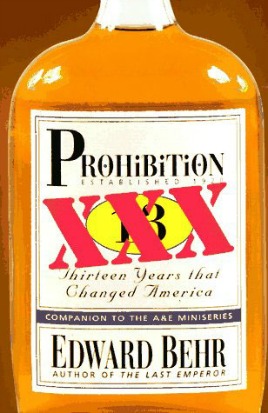
Thirteen Years that Changed America By Edward Behr
As always, music come courtesy of Music Alley. Visit them at Musicalley.com
by The History Chicks | Apr 23, 2014 | Episode, Podcasts, Special
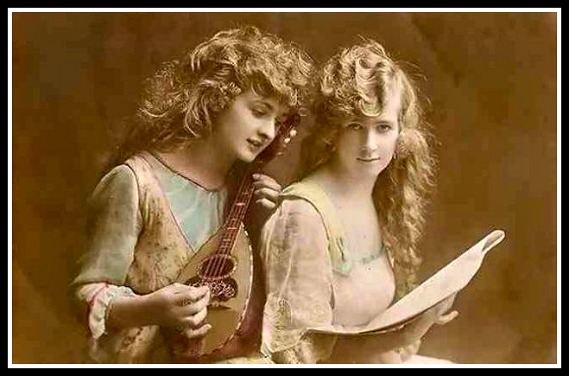
Take a musical trip with us as we revisit some of our favorite songs from Seasons Three and Four. For each episode we select a song or piece of music that brings our episode subject to mind. Maybe the lyrics reminded us of her, the beat fit her life, or the chorus defined her legacy- something that ties the music to her story. We don’t usually play the whole piece, so this is our chance to showcase the whole song and thank the artists who made it available to us.
If you have been turning off our podcasts when we say, “Bye!” you are missing out on not only some great independent music, but we have been known to tack outtakes in there, too.
This episode is also a bit of a milestone: it brings us to the end of Season Four. We will be back soon for Season Five when we can share the stories of ten (at least, you know how we like to tuck in a bonus mini-casts here and there) women whose lives are worthy of a good chat.
Here is the playlist: (It’s longer than last time, and there is OPERA!)
1. “Justice Will Roll Down” by Sandra McCracken
(from Episode 25, Ida Wells)
2. “Broken” by jamesking
(from Episode 42, Frida Kahlo)
3. “Know Which Way The Wind Blows” by The Postmarks
(from Episode 38, Jane Austen)
4. “Lost Things” by Viola
(from Episode 45, Hatshepsut)
5. “Bravely” by Mieka Pauley
(from Episode 23, Margaret “Molly” Brown)
6. “Taking A Chance On Love” by Danny Fong
(from Episode 24, The Last Four Wives of Henry the Eighth) <- This was so wrong 🙂
7. “On A Bridge Between Clouds” by Mujaji
(from Episode 39, Amelia Earhart)
8. “Leaf In The Tree” by Frozen Ocean Wave
(from Episode 43, Queen Elizabeth I, Part 1)
9. “Majesty” by Infernal Devices
(from Episode 21, Tudor Grandmothers)
10. “Dreamers” by The Hipstones
(from Episode 41, Bessie Coleman)
11. “The Tsar’s Bride, Aria from Act IV” written by Nicolai Rimsky-Korsakov and performed by Elena Zoubareva
(from Episode 32, The Romanovs (Part 1)
12. “Paris” by Friendly Fires
(from Episode 34, Josephine Baker, Part 1)
13. “Should Have Known Better” by Samantha Farrell
(from The Jane Austen Book Club, Part 3)
14. “You’re Human After All” by Stars and Skylines
(from Cleopatra, Episode 46)
15. “I Can Sing A Rainbow” by Beth Burrows (memories of preschool!)
(from The Ladies of The Wizard Of Oz Minicast)
16. “Made of Stars” by Xavier & Ophelia
(Bonus track!)
As always, find this music and more at Music Alley. Visit them at Music.mevio.com
 And in her free time what did she do? Write. Her sister challenged her to write a detective story by saying Agatha couldn’t so during the war Agatha completed a novel, The Mysterious Affair At Styles, and sent it off to publishers. She soon met a dashing and charming young aviator, Archie Christie who would- despite concerns and lack of time together- become her husband. Life with Archie distracted her- setting up a home and having a baby will do that- but one day she got word that her novel, starring a detective who was to follow her around for most of her career- Hercule Poirot- was to be published.
And in her free time what did she do? Write. Her sister challenged her to write a detective story by saying Agatha couldn’t so during the war Agatha completed a novel, The Mysterious Affair At Styles, and sent it off to publishers. She soon met a dashing and charming young aviator, Archie Christie who would- despite concerns and lack of time together- become her husband. Life with Archie distracted her- setting up a home and having a baby will do that- but one day she got word that her novel, starring a detective who was to follow her around for most of her career- Hercule Poirot- was to be published.







 And Susan’s favorites:
And Susan’s favorites: 

 The BBC movie is available on DVD, we got a copy from the library (Freesies!)
The BBC movie is available on DVD, we got a copy from the library (Freesies!) 











